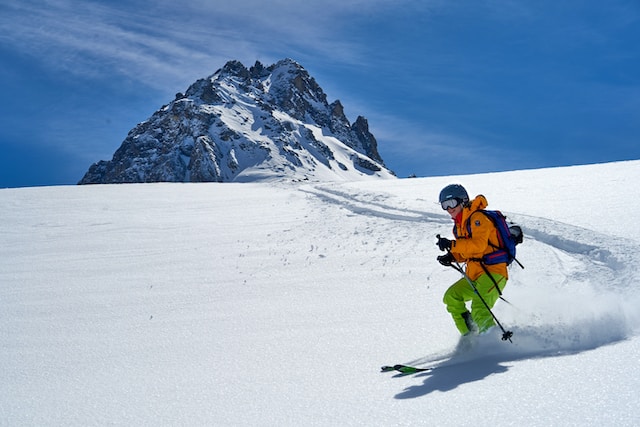Going on a skiing vacation should be an exciting adventure that creates memories to last a lifetime. But to ensure you have the best experience possible, some prep work is involved before hitting the slopes. Whether you’re an experienced skier or are just starting, proper preparation can help make your skiing vacation as safe and enjoyable as possible. Read on to find out how to prepare for your trip with tips on choosing the right destination, packing essentials, organizing travel plans, and more.
1. Choose the Right Destination
When choosing your skiing destination, consider your skiing ability and preferences. For beginners, you can find out more about the ski resorts in your desired location and what they offer. If you’re looking for a more challenging experience, research areas known for their steep slopes and difficult terrain.
Remember to consider the ambiance and amenities of the resort – would you prefer a cozy, family-friendly environment or a bustling resort with a vibrant nightlife? The location’s weather and snow during your intended travel period are crucial factors. Last but not least, ensure the destination fits within your budget, accounting for costs like accommodation, ski passes, gear rental, and meals.
2. Get Familiar with Skiing Gear
Familiarizing yourself with skiing gear is critical in preparing for your skiing vacation. Begin with the basics: skis, poles, boots, and a helmet. The size, type, and fit of these items should be tailored to your experience level and body dimensions.
You should also invest in gloves, goggles, and appropriate winter attire to keep you warm and protected on the slopes. Additionally, consider carrying a ski backpack for essentials like water, snacks, and a first aid kit. Lastly, remember that renting gear can be cost-effective, especially if you’re a beginner or only ski sometimes.
3. Get in Shape
Skiing, while exhilarating, is also physically demanding, so it’s essential to be in good shape before your trip. Start your fitness routine several weeks before your vacation, focusing on cardiovascular exercises to boost your endurance and strength training to enhance muscle power. Balance and flexibility exercises are equally important as they can help prevent injuries on the slopes.
Running, cycling, or swimming can help you build stamina, while yoga and Pilates can improve your flexibility and core strength. Remember to include leg-strengthening exercises in your routine, as strong thighs and calves are crucial for skiing. Lastly, remember that consistency is key — stay committed to your fitness routine to ensure you’re physically prepared for the slopes.
4. Plan Your Travel
Planning your travel well in advance is fundamental to a smooth and stress-free skiing vacation. Begin by researching the best travel options to reach your destination, considering cost, travel time, and convenience. If air travel, remember to check the airline’s policy for carrying ski equipment.
Booking your accommodation early can help secure the best deals and ensure you get the type of lodging that suits your needs. It’s also advisable to look into local transportation options for the resort or nearby areas. Additionally, check the local COVID-19 guidelines and regulations of your travel destination.
5. Check the Weather Forecast
In the days leading up to your trip, keep a close eye on the weather forecast for your skiing destination. This will give you an idea of what the conditions will be like and help you plan accordingly. If there’s heavy snowfall or a storm warning, check with your airline and accommodation provider for potential delays or cancellations.
On the other hand, if the forecast shows unseasonably warm weather, this could impact the quality of ski slopes and trails. It’s best to consult with the resort before your trip and consider alternative activities or destinations. Staying updated on the weather forecast can help you make necessary adjustments and avoid disruptions to your vacation plans.
6. Know the Safety Rules
Awareness of the safety rules is paramount to ensuring a secure and enjoyable skiing experience. Whether you’re a seasoned skier or a beginner, it’s crucial to familiarize yourself with the ski resort’s safety policies and the general guidelines for safe skiing. These typically include maintaining control and speed, respecting signs and closures, and being cautious of other skiers and obstacles.
Moreover, understanding the right-of-way rules on slopes and knowing how to use the ski lifts safely is essential, too. It’s also advised to avoid skiing alone, especially in unfamiliar terrains, and always to let someone know about your skiing plans. Remember, safety first – following these rules will protect you and contribute to the overall safety of everyone on the slopes.
Proper preparation for a skiing vacation is key to a safe and enjoyable experience. From choosing the right destination and gear to staying physically fit and informed about safety protocols, being well-prepared can make all the difference in having an unforgettable trip. So follow these tips, research, and prepare for an exciting adventure on the slopes.
